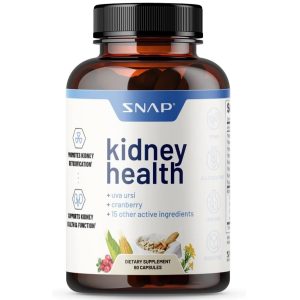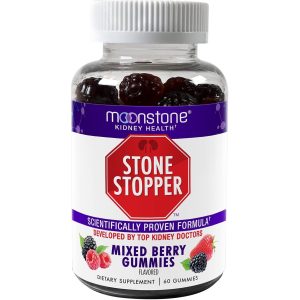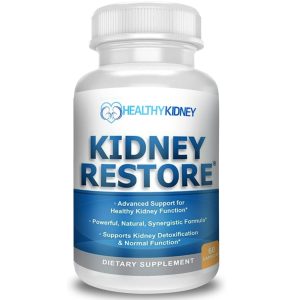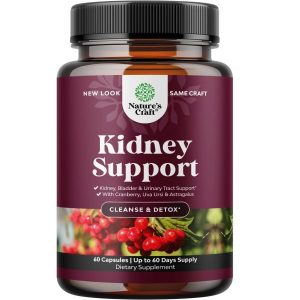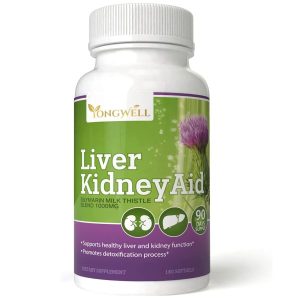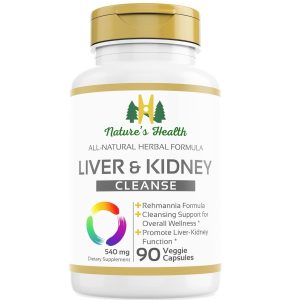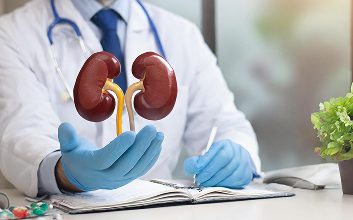Best Supplements for Improving Your Kidney Health

Maintaining good kidney health is crucial for overall well-being. The kidneys are responsible for filtering out waste and toxins from the blood, regulating blood pressure, and producing essential hormones. However, factors like unhealthy diet, medications, and certain medical conditions can put a strain on our kidneys, leading to kidney disease. While lifestyle changes and medical treatment play a significant role in managing kidney disease, incorporating the best supplements for kidney disease into our routine can provide additional support.
Importance of Kidney Health
Maintaining good kidney health is essential for our overall well-being. Our kidneys play a crucial role in filtering waste and toxins from our blood, regulating blood pressure, and producing essential hormones. Without properly functioning kidneys, our bodies would struggle to maintain a healthy balance.
Kidney disease can have serious consequences for our health. It can lead to complications such as high blood pressure, fluid retention, and electrolyte imbalances. If left untreated, it can even progress to end-stage renal disease, where dialysis or a kidney transplant becomes necessary for survival.
Taking care of our kidneys should be a priority, and incorporating supplements for kidney health can be a valuable addition to our routine. While lifestyle changes and medical treatment are crucial, certain supplements can provide additional support to help maintain optimal kidney function.
Herbs Solutions by Nature offers a range of supplements specifically formulated to promote kidney health. These supplements contain natural ingredients that have been traditionally used for their kidney-supporting properties, such as cranberry, dandelion root, and nettle leaf.
In the following sections, we will explore the role of supplements in kidney health, their benefits, the different types of supplements available, and what to consider when choosing the best supplements for kidney health. Stay tuned to learn more about how you can take care of your kidneys and improve your overall well-being.
The Role of Supplements in Kidney Health
Supplements can play a vital role in supporting kidney health and optimizing kidney function. While lifestyle changes and medical treatments are essential, incorporating the right supplements into your routine can provide an added boost.
Herbs Solutions by Nature offers a range of supplements specifically formulated to promote kidney health. These supplements contain natural ingredients, such as cranberry, dandelion root, and nettle leaf, which have long been used for their kidney-supporting properties. By harnessing the power of these natural ingredients, these supplements can help to support kidney function and protect against potential damage.
Additionally, these supplements can also provide antioxidant support. Oxidative stress can lead to kidney damage, so incorporating antioxidants into your routine can help neutralize free radicals and protect against oxidative damage. This can ultimately contribute to improved kidney health and function.
Supplements can play a valuable role in supporting kidney health. By incorporating supplements specifically formulated for kidney health, such as those offered by Herbs Solutions by Nature, you can provide your kidneys with the support they need to function optimally and protect against potential damage.
Benefits of Taking Supplements for Kidney Health
Taking supplements for kidney health can provide numerous benefits and support overall well-being. One of the key benefits is their ability to reduce inflammation in the kidneys. Inflammation can lead to kidney damage, so reducing it is essential for maintaining optimal kidney function. The natural ingredients found in these supplements, such as cranberry, dandelion root, and nettle leaf, have anti-inflammatory properties that can help reduce inflammation and protect against further damage.
Additionally, supplements for kidney health can provide antioxidant support. Oxidative stress can also lead to kidney damage, so incorporating antioxidants into your routine can help neutralize free radicals and protect against oxidative damage. This can ultimately contribute to improved kidney health and function.
By providing the necessary nutrients and herbal extracts, these supplements can help optimize kidney function and promote overall kidney health.
One of the key benefits of taking supplements for kidney health is their ability to reduce inflammation. Inflammation in the kidneys can lead to further kidney damage, so reducing inflammation is crucial for maintaining optimal kidney function. The natural ingredients in these supplements have anti-inflammatory properties, which can help to reduce inflammation in the kidneys and protect against damage.
What to Look for When Choosing the Best Supplements for Kidney Health
When it comes to choosing the best supplements for kidney health, there are a few key factors to consider. First and foremost, it is important to look for supplements that are specifically formulated to support kidney function. These supplements will often contain ingredients that have been traditionally used for their kidney-supporting properties, such as cranberry, dandelion root, and nettle leaf.
In addition to considering the specific ingredients, it is also important to choose supplements that are high quality and made by reputable brands. Look for supplements that are made with natural ingredients and have undergone rigorous testing for purity and potency. This will ensure that you are getting a product that is safe and effective for improving kidney health.
Furthermore, it is important to consult with a healthcare professional or a kidney specialist before incorporating any new supplements into your routine. They can guide the best types of supplements for your specific needs and help you choose the most appropriate option for your kidney health.
By taking the time to choose the best supplements for kidney health and incorporating them into your routine, you can provide your kidneys with the support they need to function optimally and improve your overall well-being.
Types of Supplements for Kidney Health
When it comes to choosing supplements for kidney health, there are various options available to consider. Each type of supplement offers unique benefits and can cater to different aspects of kidney health. Some common types of supplements for kidney health include:
Snap Supplements Kidney Health Support, Kidney Cleanse Detox & Repair Formula, Uva Ursi Capsules, Kidney Supplement Kidney Restore, 15 Vitamins Plants & Herbs (60 Capsules)
About this item
- Healthy Kidney Function: Snap Supplements Kidney Health Support Antioxidant nutrients and combined herbal medicines provide targeted cellular support to aid kidney health. Our kidney supplement has Golden Rod, a well known botanical used traditionally for its soothing supportive role in urinary and kidney health.
- Urinary System Health: Well established botanicals help to nurture, cleanse and support healthy urinary function. Water soluble antioxidants provide free radical protection, supplementing may ensure adequate levels to support urinary health and wellbeing.
- Aids Healthy Elimination: Proprietary botanical detox blend supports healthy system function to aid natural elimination. Nettle Leaf is a botanical kidney tonic supports healthy kidney function and overall health.
- Highest Quality Ingredients: We believe optimizing your health should be simple. That’s why we’re committed to providing you with natural, high-quality supplements made with only the purest and carefully selected superfoods, botanicals, vitamins, and minerals formulated for optimal health impact and results.
Stone Stopper Kidney Support Gummies, Kidney Cleanse Detox & Repair for Stones Prevention, 60 Mixed Berry Gummies, 2 Week Supply
About this item
- KIDNEY SUPPORT & STONE PREVENTION: The active citrates aid in keeping kidneys healthy and help prevent stones from forming by increasing urine citrate and urine pH. Just take 2 gummies, 3 times daily (or more based on preference of sugar intake).
- BENEFICIAL INGREDIENTS: A patented formula rich in alkali citrate, provides daily support for kidney health by helping manage urine pH and citrate levels. 1 serving is equivalent to 9 mEq Alkali Citrate and provides an excellent source of Vitamin B6 and Magnesium.
- IMMUNE SUPPORT: Packed with antioxidants and vitamins that help to boost your immune system. Lessen stress and increase heart health.
- DOCTOR RECOMMENDED & DEVELOPED: Moonstone Nutrition is committed to enhancing daily kidney health with its patented alkaline citrate formula, designed by doctors to prevent kidney stone formation.
- CHANCA PIEDRA ALTERNATIVE: Discover a powerful alternative to Chanca Piedra with our stone-breaking supplement. Designed to assist in preventing and dissolving kidney stones, our formula is designed to help break them down and facilitate their natural passage, promoting kidney health.
Kidney Restore Kidney Cleanse and Kidney Health Supplement to Support Normal Kidney Function, Vitamins for Kidney Health 60 caps
About this item
- Our one-of-a-kind science-based supplement supports kidney health from multiple angles for max kidney support. you will not find this in other vitamins or supplements. Over 50,000 people have used Kidney Restore and reported good kidney health and it improved the quality of their lives! There is hope for supported kidneys. Let our specialty take your health to a new level!
- The Probiotic microorganisms & FOS support kidneys by supporting natural elimination of bad stuff in the gut; this supports kidney health by allowing them to work less and rest. The delayed release sodium bicarb neutralizes renal acids and body junk, balances minerals and so much more. This is the most complete kidney supplement out there. Niacin to support phosphorus levels & heart health. Let Kidney Restore support your kidneys!
- Support kidney health and overall function with our targeted blend of ingredients; safe to use with other supplements; manufactured and checked in cGMP registered facility, instructions on package to access eBook 2-Day Kidney clean up on how to best use Kidney Restore with a renal clean up diet. Product support by health coaches, but more importantly a real simple natural way to support kidneys without any negatives
- Keep your kidney health to support function and increase flow; a weak kidney leads to low energy levels, appetite loss, etc., but you can support your kidney health starting today. Naturally support your kidney health without adverse effects and shock your professional on your next visit! To learn more keep reading, see the images and videos
- Created by a naturopath and nutritionist, who has an active blog, you tube channel and who has personally gone through it all; risk nothing purchase with a 100% compensated if unhappy. Your kidneys need the proper support for the long term. Kidney Restore makes sure your kidneys have all the nutrition they need to support kidney health for years to come.
Kidney Support Cranberry Pills for Women and Men – High Strength Kidney Cleanse Detox & Repair with Stinging Nettle Uva Ursi and Astragalus for Kidney and Bladder Health – Non-GMO Halal and Vegan
About this item
- Kidney Health Supplement – We have sourced herbal-based ingredients such as wild blueberry powder organic red raspberry leaf and java tea for cranberry pills for urinary tract and bladder health
- Cranberry Pills for Kidney Health – Experience the power of Kidney Support Cranberry Pills for Women and Men with a selection of premium ingredients like uva ursi horsetail herb juniper berries and more
- Improved Urinary Tract Health – We know that urinary tract health for women is very important to you so we crafted the perfect kidney detox supplement with cranberry extract and nettle leaf powder
- Premium Kidney Supplement – These potent cranberry capsules with red raspberry leaf capsules help restore kidney health with the added benefits of stinging nettle tea and red vine leaf extract
- Our Promise to You – We value health and wellness which is why all of our products are tested by third-party labs and specially crafted using ingredients and processes you can put your faith in
Liver Kidney Aid, Herbal Based Ingredients Supports Liver and Kidney Health, 90 Days Supply (180 Softgels)
About this item
- SUPPORTS LIVER AND KIDNEY HEALTH. Liver Kidney Aid, Herbal Based Ingredients Supports Liver and Kidney Health 90 days supply with each bottle.
- MAXIMUM STRENGTH. Immune enhancing, anti-fatigue, and detoxification
- HERBAL BASED INGREDIENTS. Milk Thistle, Dandelion Root, Artichoke, Gojiberry
- 100% FREE OF preservatives, aritificial coloring, flavors, sugar & wax
- MADE IN THE U.S.A. in an FDA-Registered facility.
Nature’s Health Liver and Kidney Cleanse Supplement – Rehmannia Formula – Naturally Detox and Boost Vitality – 90 Vegetarian Capsules
About this item
- Liver and Kidney Cleanse is a Rehmannia Root formulation which helps the body promote natural kidney detoxing and liver cleansing. This all-natural herbal formula helps keep up energy, and vitality. This supplement consists of several ingredients that blend together to keep the liver and kidney functions healthy which contribute to body composition and metabolic functions.
- VEGGIE CAPSULES: Plant cellulose capsules offer more benefits over gelatin capsules. Vegetable Capsules are tasteless, dissolve faster, more durable, and are ideal for vegan, kosher, and halal diets
- PURE PROMISE: Liver & Kidney Cleanse is backed by our Pure Promise in which we DO NOT use synthetic additives such as Magnesium Stearate, binders, fillers, preservatives, artificial coloring or flavoring, offering you nothing but 100% of our all-natural formulation. This is our Pure Promise to you.
- GUARANTEED FRESHNESS: Two seals are used to ensure freshness of the product and to offer more protection against tampering
100% LEGENDARY SATISFACTION GUARANTEE: We are so confident that you will be satisfied with your results or your money back, guaranteed. You have nothing to lose and everything to gain. Try Nature’s Health Liver & Kidney today!
Nature’s Way Kidney Bladder, Traditional Herbs Supplement, 900mg Per Serving, 100 Vegan Capsules
About this item
- Traditional herbs.
- Botanicals are sourced where they grow best. Nature’s Way Kidney Bladder
- Trusted quality. This product is Non-GMO Project Verified.
- Gluten-free and vegan. No salt, yeast-derived ingredients, wheat, corn, soy, dairy, or artificial colors, flavors, or preservatives.
- Bottle made with 97% post-consumer recycled materials.
It is important to consult with a healthcare professional or a kidney specialist before incorporating any new supplements into your routine, especially if you have pre-existing kidney conditions or are taking medications. They can guide the best types of supplements for your specific needs and help you choose the most appropriate option for your kidney health. Remember, supplements should not replace a healthy diet and lifestyle but rather be used as a complementary addition to support kidney health.

